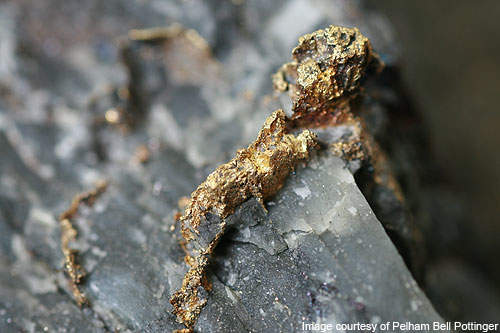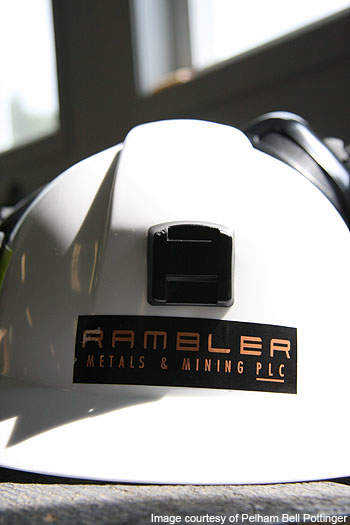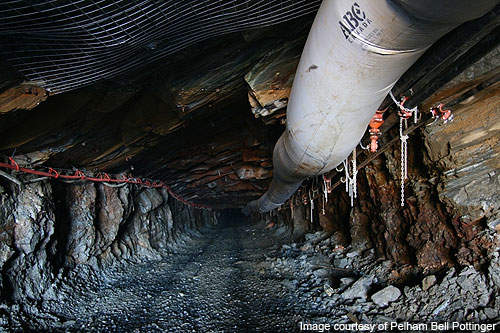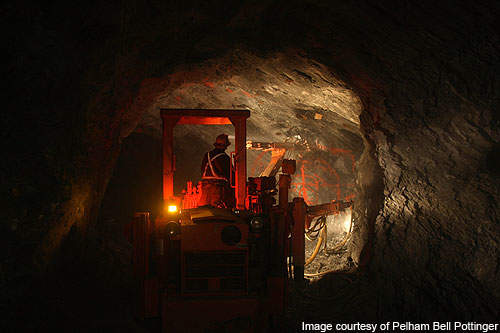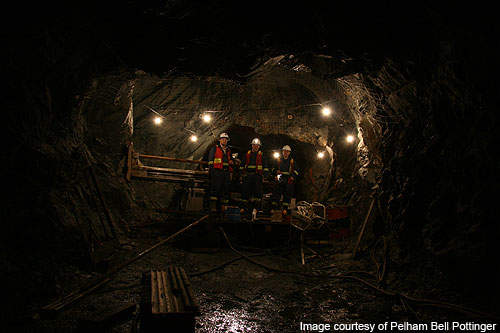The Ming copper and gold mine is located on the Baie Verte Peninsula of Newfoundland and Labrador, Canada. The mine is also known as the Ming property or the Rambler property. It hosts the former Ming and Ming west copper-gold mines that operated until 1982 and 1996 respectively. Mining at the property ceased after workings reached an adjacent property’s boundary. Rambler Metals and Mining that owns the property, acquired it in 2005 after the property was consolidated successfully.
The mine is rapidly changing into a newly developed operation from a historic exploration target. Rambler Metals and Mining received the final construction approval for the project on in March 2011. Production is expected to begin by the second half of 2011.
Reserves
The Ming mine hosts 0.6mt of proven reserves grading at 2.25% Cu, 3.24g/t Au, 16.44g/t Ag and 0.75% Zn. Probable reserves are 0.5mt grading at 1.67% Cu, 2.61g/t Au, 9.90g/t Ag and 0.43% Zn. The mine additionally contains 10.6mt of combined measured and indicated resources at a grade of 1.77% Cu, 0.61g/t Au, 3.88g/t Ag and 0.15% Zn. Inferred resources stand at 1.8mt grading at 1.91% Cu, 1.83g/t Au, 8.82g/t Ag and 0.66% Zn.
Geology
The deposit lies within the Central Mobile belt of Newfoundland in the Baie Verte area. The north-easterly trending, steeply dipping Baie Verte lineament outlines the boundary between the Dunnage and Humber zones, two of the four major tectonostratigraphic zones hosted within Newfoundland. The lineament trends eastward and scatters into a series of southerly dipping thrust faults. The Ming deposit is hosted within the Duunage zone, a key VMS district with more than 20 copper deposits.
The primary geological elements of the deposit include the Point Rousse sequence and the Pacquet Harbour group. The Point Rousse sequence measures 7.5km in thickness and includes a dismembered ophiolite complex of mafic and ultramafic rocks that lie unconformably under a cover sequence of mafic volcanic and volcaniclastics rocks. Rocks of the tectonically bounded complex have been metamorphosed to greenschist facies.
The Pacquet harbor group is an ophiolite of the early Ordovician age. The group hosts a moderately to steeply plunging complex of metamorphosed mafic volcanic rocks, lesser felsic volcanic rocks, mixed mafic and felsic volcaniclastic rocks and intrusive rocks of shallow level.
Deformation and metamorphiss across the Pacquet harbor group has not been homogenous. Within the Ming area, four phases of deformation has occurred, with the second phase being the most noteworthy. Designated as D2, the second phase of deformation resulted in an intense, penetrative, transposition fabric, parallel or sub parallel to the main layering. The deformation has impacted all ore deposits within the deposit area making them rotated and elongated, parallel to the north-easterly dipping lineation.
Within the deposit area, the Pacquet Harbour group is segmented into two stratigraphic sequences, hosted along the sides of the Rambler Brook fault, an east-west to north-west-south-east trending low angle thrust fault. The sequences are known as Uncle’s sequence and Rambler sequence. The Uncle’s sequence is dominated by mafic volcanic with lesser felsic and intermediate volcanic rocks. The Rambler sequence hosts a felsic volcaniclastics pile that is overlain by a sequence of mafic and intermediate flows and volcaniclastics. The sequence comprises the Main, East, Ming, Ming footwall and Ming west massive sulphide deposits.
Two main styles of copper, gold, silver and zinc mineralisation in the Ming area are hosted within the Ming Massive Sulphide horizon (MMS) and the Lower Footwall Zone (LFZ). A 100m-thick sericitised pyritised felsic unit separates the two zones of mineralisation. The MMS comprises volcanogenic massive sulphide mineralisation, while stringer style sulphide mineralisation is found within the LFZ.
Mining
The deposit will be mined using the longhole mining method. Depending on the thickness and attitude of the ore, longhole stoping configuration varies across different sections of the mine. In a few localised areas, where shallow dipping ore cannot be mined using longhole methods, a form of longhole wall slashing is used.
The sublevel spacing between the stopes range between 10m and 20m vertically. Drilling and blasting techniques vary depending on the stope configurations. These include large diameter ITH downhole stopes and top-hammer blasthole stopes.
The blasthole stopes are mined with conventional slots and the ITH stopes are mined using vertical crater retreat mining techniques. A host of pillar recovery methods including longhole and conventional jack-leg mining are employed to reduce the amount of leftover ore.
Finance
The project will be funded through net proceeds realised from private placement. The company announced to raise £10m, through a placement of 27.78 million ordinary shares at 36p each.

